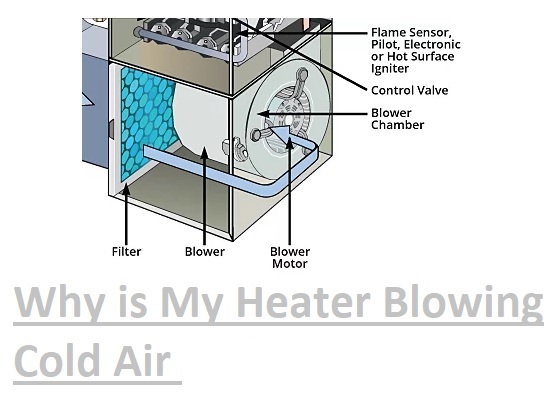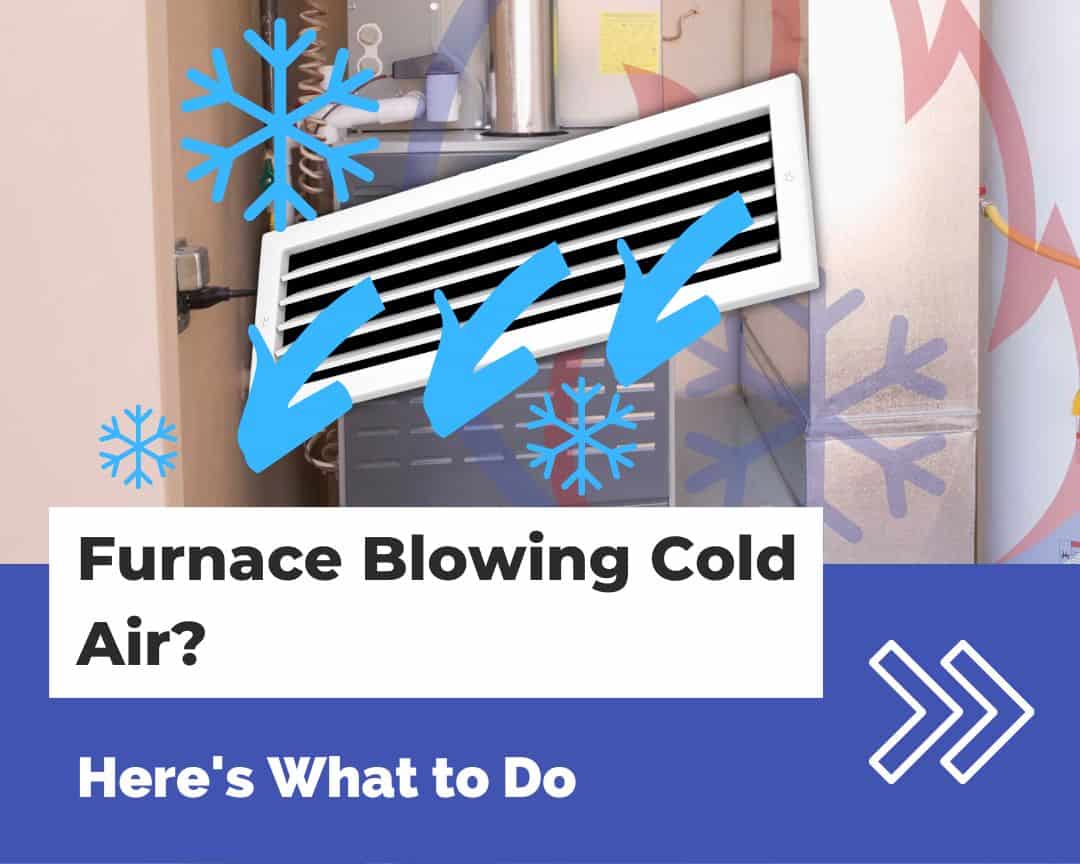What To Do If Heater Is Blowing Cold Air

Waking up to a blast of cold air when you expect warmth from your heater is a frustrating experience. It's a common household issue, but before you panic and call a technician, there are several simple checks and fixes you can try yourself. This guide will walk you through a logical troubleshooting process, empowering you to identify and potentially resolve the problem safely. Remember, when dealing with electricity, gas, or complex repairs, it's always best to err on the side of caution and call a qualified professional.
Initial Checks: The Foundation of Troubleshooting
Before diving into potentially complex issues, let's start with the basics. These initial checks can often resolve the problem quickly.
1. Verify Power Supply
This seems obvious, but it's often overlooked. Ensure your heater is actually receiving power.
- Check the Circuit Breaker: Locate the circuit breaker for your heater in your electrical panel. Make sure it hasn't tripped. If it has, reset it. If it trips again immediately, do not keep resetting it. This indicates a more serious electrical issue and requires a professional electrician.
- Inspect the Power Cord (if applicable): If your heater has a power cord, examine it for any visible damage, such as fraying or exposed wires. Do not use the heater if the cord is damaged.
- Test the Outlet: Plug another device into the same outlet to verify that the outlet is working. If the outlet isn't working, it's likely a problem with the outlet itself and not the heater. Call an electrician to repair the outlet.
2. Confirm Thermostat Settings
Ensure your thermostat is properly configured.
- Check the Temperature Setting: Make sure the thermostat is set to a temperature *higher* than the current room temperature.
- Verify the Mode: Ensure the thermostat is set to "Heat" or "Auto," not "Cool" or "Fan Only." The specific terminology may vary depending on your thermostat model.
- Programmable Thermostats: If you have a programmable thermostat, double-check the schedule settings. It's possible the thermostat is programmed to be off or at a lower temperature during the time you're experiencing the cold air.
- Battery Check (if applicable): Some thermostats require batteries. If the batteries are low, the thermostat may not function correctly. Replace the batteries.
3. Examine the Air Filter (For Forced-Air Furnaces and Heat Pumps)
A dirty air filter is a common culprit behind heating problems.
- Locate the Air Filter: The air filter is typically located in the furnace itself or in a nearby return air vent.
- Inspect the Filter: Remove the filter and hold it up to the light. If you can't see light through it, it's likely clogged.
- Replace the Filter: Replace the dirty filter with a new one of the same size and type. This is a simple and inexpensive maintenance task that can significantly improve your heater's performance.
- Filter Type: Ensure you're using the correct type of filter for your system. Using an excessively restrictive filter can also cause problems.
Troubleshooting Specific Heater Types
The troubleshooting steps can vary depending on the type of heater you have.
1. Forced-Air Furnace
Forced-air furnaces use natural gas, propane, or oil to heat air, which is then distributed throughout your home via ductwork.
- Check the Pilot Light (Gas Furnaces): If you have an older gas furnace, it may have a pilot light. If the pilot light is out, the furnace won't ignite. Refer to your furnace's manual for instructions on relighting the pilot light. If you smell gas, do not attempt to light the pilot light. Immediately leave the area and call your gas company.
- Listen for Ignition: When the thermostat calls for heat, you should hear the furnace attempt to ignite. If you don't hear anything, there may be a problem with the ignition system (e.g., a faulty igniter or flame sensor). This is a job for a qualified HVAC technician.
- Inspect the Blower Motor: The blower motor circulates the heated air throughout your home. If the blower motor isn't working, the air won't be distributed. Listen for unusual noises coming from the blower motor compartment. A failing blower motor may require replacement by a professional.
- Check the Gas Valve: Ensure the gas valve is fully open. The valve is usually located near the furnace.
2. Heat Pump
Heat pumps transfer heat from one location to another. In the winter, they extract heat from the outside air and transfer it inside.
- Check the Outdoor Unit: Make sure the outdoor unit is free of debris, such as leaves, snow, or ice. Obstructions can significantly reduce the heat pump's efficiency.
- Defrost Cycle: Heat pumps periodically go through a defrost cycle to remove ice buildup on the outdoor coil. During this cycle, the heat pump may blow cool air for a short period. This is normal.
- Emergency Heat: If your heat pump isn't producing enough heat, you can switch to "Emergency Heat." This uses electric resistance heat to supplement the heat pump. However, emergency heat is less efficient than using the heat pump. If you are having to use emergency heat frequently, call a professional.
- Refrigerant Leaks: If your heat pump isn't heating properly, it may be due to a refrigerant leak. Refrigerant leaks require professional repair.
3. Electric Space Heaters
Electric space heaters are portable heaters that use electricity to generate heat.
- Tip-Over Switch: Many electric space heaters have a tip-over switch that automatically shuts off the heater if it's knocked over. Make sure the heater is on a level surface.
- Overheat Protection: Some electric space heaters have an overheat protection feature that shuts off the heater if it gets too hot. If the heater has overheated, let it cool down completely before attempting to restart it.
- Heating Element: If the heater isn't producing any heat, the heating element may be faulty. Inspect the heating element for any visible damage. If the heating element is damaged, the heater will need to be replaced.
4. Baseboard Heaters
Baseboard heaters are typically electric and are installed along the baseboards of a room.
- Thermostat (Built-in or Wall-Mounted): Ensure the thermostat is set to a temperature higher than the current room temperature. Some baseboard heaters have a built-in thermostat, while others are controlled by a wall-mounted thermostat.
- Check for Obstructions: Make sure there are no obstructions blocking the airflow around the heater, such as furniture or curtains.
- Thermal Cutout (Reset Button): Some baseboard heaters have a thermal cutout that shuts off the heater if it overheats. Look for a small reset button on the heater. If the heater has overheated, press the reset button to restart it.
- Wiring Connections: Caution: Working with electrical wiring can be dangerous. If you're not comfortable working with electricity, call an electrician. Carefully inspect the wiring connections to the heater. Make sure the wires are securely connected and there are no loose connections.
When to Call a Professional
While many heating problems can be resolved with simple DIY fixes, some issues require the expertise of a qualified HVAC technician or electrician. Here are some situations where you should call a professional:
- Gas Leaks: If you smell gas, immediately leave the area and call your gas company. Do not attempt to repair a gas leak yourself.
- Electrical Problems: If you're not comfortable working with electricity, do not attempt to repair electrical problems yourself. Call a qualified electrician.
- Refrigerant Leaks (Heat Pumps): Refrigerant leaks require specialized equipment and training to repair.
- Complex Repairs: If you've tried the basic troubleshooting steps and your heater is still not working, it's likely a more complex problem that requires professional diagnosis and repair. Examples of complex repairs include replacing a furnace's ignition system, blower motor, or heat exchanger.
- Warranty Issues: If your heater is still under warranty, attempting to repair it yourself may void the warranty. It's best to call a qualified technician to perform any repairs that are covered by the warranty.
- Repeated Problems: If you find yourself constantly troubleshooting your heater, it may be time to consider replacing it with a new, more efficient model.
Preventative Maintenance
The best way to avoid heating problems is to perform regular preventative maintenance. Here are some tips:
- Change the Air Filter Regularly: Check your air filter monthly and replace it as needed. A dirty air filter can reduce your heater's efficiency and cause it to overheat.
- Schedule Annual Maintenance: Have your heater inspected and serviced by a qualified HVAC technician at least once a year. This will help ensure that your heater is running efficiently and safely.
- Clear Debris from Outdoor Units (Heat Pumps): Keep the area around your heat pump's outdoor unit free of debris, such as leaves, snow, and ice.
- Inspect Ductwork: Check your ductwork for leaks or damage. Leaky ductwork can reduce your heater's efficiency and cause uneven heating throughout your home. Consider having your ductwork sealed by a professional.
- Keep Vents Clear: Ensure that all vents are open and unobstructed.
By following these troubleshooting steps and performing regular preventative maintenance, you can help keep your heater running smoothly and efficiently for years to come. Remember to prioritize safety and call a professional when necessary. Staying proactive and informed can save you money and keep your home comfortable all winter long.










